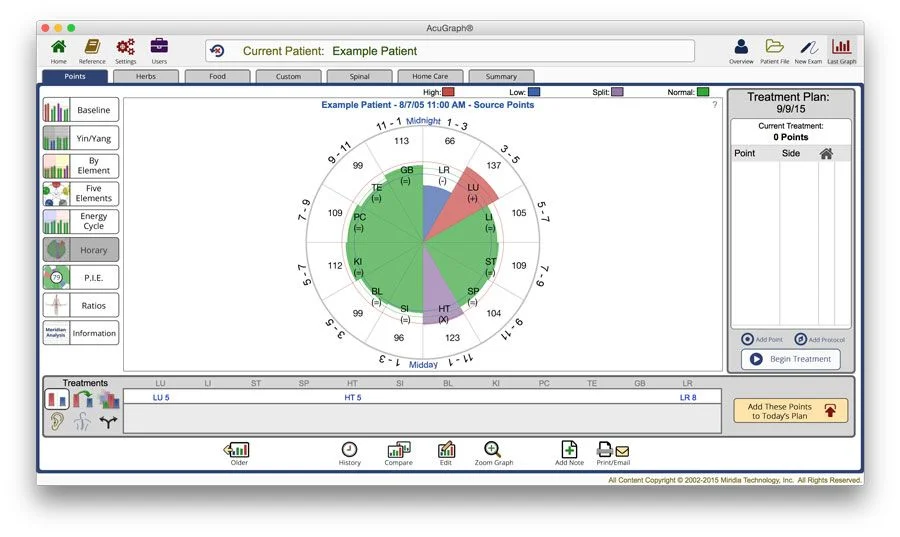
Acupuncture is a time-honored practice with a rich history, renowned for its ability to balance the body’s energy and promote healing. With advancements in technology, tools like Acugraph have become invaluable in modern acupuncture practices. This article explores the key aspects of Acugraph, including when and why it should be used, and how it can enhance your acupuncture practice.
What Is Acugraph?
Acugraph is a computerized diagnostic tool designed to measure and analyze the electrical conductance of acupuncture points. By assessing these points, Acugraph provides a visual and quantitative representation of the body’s energy flow, helping practitioners make more informed decisions about treatment plans.
How Acugraph Works
Acugraph uses a small, non-invasive probe to measure the electrical resistance of acupuncture points. These measurements are then analyzed by the software, which generates detailed reports and graphs. These reports can help practitioners understand the energy imbalances in a patient’s meridians, providing insights that might not be immediately visible through traditional diagnostic methods.
When Should You Use Acugraph in Your Practice?
1. Initial Patient Assessment
One of the most beneficial times to use Acugraph is during the initial assessment of a new patient. By obtaining a baseline measurement of the body’s energy flow, practitioners can better understand the patient’s overall health status and identify areas of imbalance.
Benefits:
- Comprehensive Overview: Provides a detailed analysis of the energy levels in different meridians.
- Objective Data: Offers quantifiable data that can be compared over time to track progress.
- Personalized Treatment: Helps tailor treatment plans to address specific energy imbalances.
2. Tracking Treatment Progress
Regular use of Acugraph can be invaluable for tracking the effectiveness of acupuncture treatments. By comparing before-and-after measurements, practitioners can gauge how well the treatment is working and make necessary adjustments.
Benefits:
- Visual Progress: Allows practitioners and patients to see changes in energy levels over time.
- Treatment Adjustment: Facilitates modifications to treatment plans based on real-time data.
- Enhanced Communication: Provides tangible evidence of progress that can be shared with patients.
3. Diagnosing Persistent or Complex Conditions
For patients with persistent or complex conditions, Acugraph can offer additional insights into the underlying energy imbalances that might not be apparent through traditional methods. It can help identify specific meridians that are out of balance, guiding more precise treatment strategies.
Benefits:
- Detailed Analysis: Provides deeper insights into complex health issues.
- Focused Treatment: Helps target specific areas of imbalance for more effective treatment.
- Enhanced Diagnosis: Assists in diagnosing conditions that may be challenging to pinpoint with conventional methods.
4. Optimizing Treatment Protocols
Acugraph can also be useful in optimizing treatment protocols by identifying which acupuncture points and meridians need the most attention. This helps practitioners develop more effective and customized treatment plans.
Benefits:
- Efficient Use of Resources: Allows practitioners to focus on the most relevant acupuncture points.
- Customized Protocols: Supports the creation of tailored treatment plans based on specific patient needs.
- Improved Outcomes: Enhances the likelihood of successful treatment outcomes through targeted interventions.
How to Integrate Acugraph into Your Practice
1. Training and Familiarization
To make the most of Acugraph, practitioners should undergo proper training and become familiar with the software and its features. Understanding how to interpret the data and integrate it into treatment plans is crucial for effective use.
Steps:
- Attend Workshops: Participate in training workshops offered by Acugraph providers.
- Practice Regularly: Use Acugraph frequently to become comfortable with its functions and data interpretation.
- Seek Support: Utilize customer support and resources provided by Acugraph to resolve any issues or questions.
2. Incorporating Acugraph into Patient Consultations
Integrate Acugraph into patient consultations to enhance the diagnostic process and treatment planning. Explain the benefits of Acugraph to patients and how it will be used to improve their care.
Steps:
- Educate Patients: Inform patients about the role of Acugraph in their treatment and its benefits.
- Discuss Findings: Review Acugraph results with patients and explain how they impact their treatment plan.
- Encourage Feedback: Solicit patient feedback on the use of Acugraph to ensure they feel informed and involved in their care.
3. Maintaining Records and Data
Regularly maintain and review Acugraph data to track patient progress and refine treatment strategies. Proper record-keeping ensures that valuable information is not lost and can be used for future reference.
Steps:
- Update Records: Keep detailed records of Acugraph measurements and treatment plans.
- Review Data: Periodically review patient data to assess progress and make adjustments.
- Secure Data: Ensure that patient data is stored securely and in compliance with privacy regulations.
Conclusion
Acugraph is a powerful tool that can significantly enhance the effectiveness of an acupuncture practice. By providing objective data and detailed insights into energy imbalances, Acugraph helps practitioners deliver more personalized and effective treatments. Using Acugraph during initial assessments, for tracking progress, diagnosing complex conditions, and optimizing treatment protocols can lead to improved patient outcomes and a more efficient practice.
Integrating Acugraph into your acupuncture practice involves training, incorporating it into patient consultations, and maintaining accurate records. With its ability to provide detailed and actionable information, Acugraph stands out as a valuable addition to modern acupuncture practices, offering a bridge between traditional methods and cutting-edge technology.